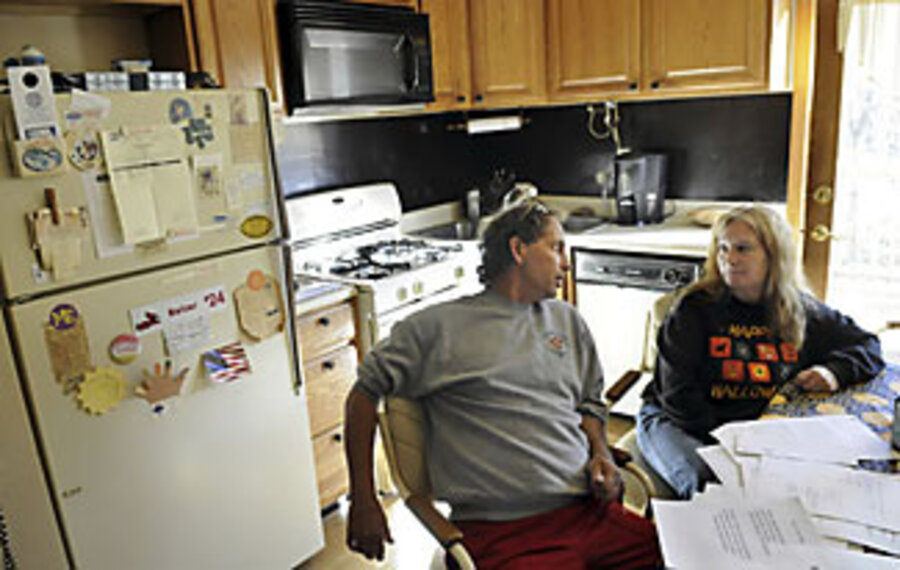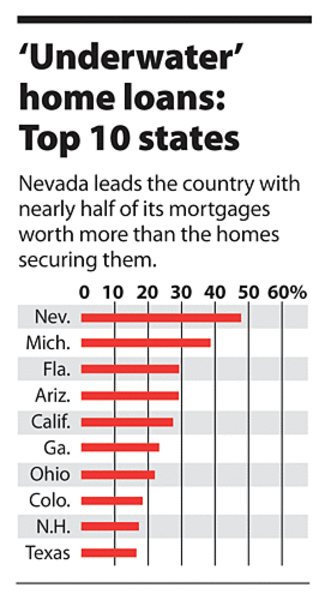New bailout focus: how to fight foreclosures
Loading...
| Washington
First came Wall Street. Now Washington is turning more of its attention to Main Street, as the federal government moves to try and rescue more mortgage holders in financial trouble.
On Nov. 11, administration officials announced a plan for refinancing delinquent loans held by Fannie Mae and Freddie Mac, the giant government-controlled mortgage companies. The move could lead eventually to lower payments for hundreds of thousands of homeowners.
But the future extent of Uncle Sam's housing bailout remains a major open question. The new plan is all well and good, say critics, but it does not affect millions of strapped subprime borrowers whose loans aren't controlled by Fannie and Freddie.
Political tension over this issue seems sure to arise in the coming transition period. Key Democrats want to use cash from the already-passed $700 billion financial rescue bill for a larger mortgage-rescue program. The man who controls that pot of money, Treasury Secretary Henry Paulson, isn't sure that's such a good idea.
New mortgage aid would constitute direct government spending, said Mr. Paulson on Nov. 12. The financial-rescue money, by contrast, is supposed to go for investment, albeit in troubled financial institutions.
"We continue to explore further ways to reduce the risk of foreclosures," said Paulson.
The concept of aid for troubled homeowners isn't what is at issue. Almost everyone involved insists that the current troubled economic period won't end until housing prices bottom out and homeowners – plus their lenders – feel financially stable once again.
The difference is over the approach. Should it be one of limited government intervention, plus a push to get the private sector to do more? Or should it be more controlled by the government? In that sense, the clash may be a classic one of Republican versus Democratic market sensibilities.
The target is the troubled homeowner whose loan has some hope of being salvaged, said Rep. Barney Frank (D) of Massachusetts, head of the House Financial Services Committee, at a Nov. 12 hearing.
"There is zero likelihood that federal tax dollars will go to those who hold loans that should never have been made in the first place," said Mr. Frank, who will play a key role in developing policy for congressional Democrats on the issue.
Federal money shouldn't be used just to help homeowners pay mortgages, he said. Rather, it should be used to induce institutions that hold troubled loans to write down some of them to the point where the borrower can repay.
"Foreclosures damage the whole economy. This is not a matter of compassions for those who would be foreclosed," said Frank.
The US program announced on Nov. 11 would build on the government's existing Hope Now program with a streamlined mortgage-modification process.
It would be open to homeowners who are at least three months delinquent on their mortgage payments and whose loans are either owned or guaranteed by Fannie Mae and Freddie Mac.
The program's goal is to reduce the monthly payment on the loan to no more than 38 percent of a family's monthly income. This could be accomplished by lengthening the term of the loan, lowering the interest rate, or reducing the loan principal.
"My guess is this would result in some large and significant number of mortgages being restructured," says Alex Pollock, a resident scholar at the American Enterprise Institute and former president of the Federal Home Loan Bank of Chicago.
It is true that millions of homeowners with troubled loans would not qualify for the new program simply because their mortgage is not held or guaranteed by Fannie and Freddie, notes Mr. Pollock. But expansion of this rescue program would inevitably become a difficult exercise in line-drawing, he says.
"You have this perverse feedback loop, where the more people in trouble get help, the more people who are keeping up with their payments say, 'What about me?' " says Pollock.
Paulson, for his part, announced on Nov. 12 that the Troubled Asset Recovery Program would not buy the troubled mortgage-based assets of financial institutions. That had been the original purpose of the $700 billion rescue plan.
Financial markets deteriorated too fast for the Treasury to get that program up and running, said Paulson. Instead, he resorted to direct injection of capital into banks and other financial institutions.
Paulson said the Treasury was continuing to look at a model proposed by Sheila Bair, head of the Federal Deposit Insurance Corp., under which the Treasury would spend upwards of $50 billion on a mortgage-modification program.
"We will continue working hard to make progress here," said Paulson.






